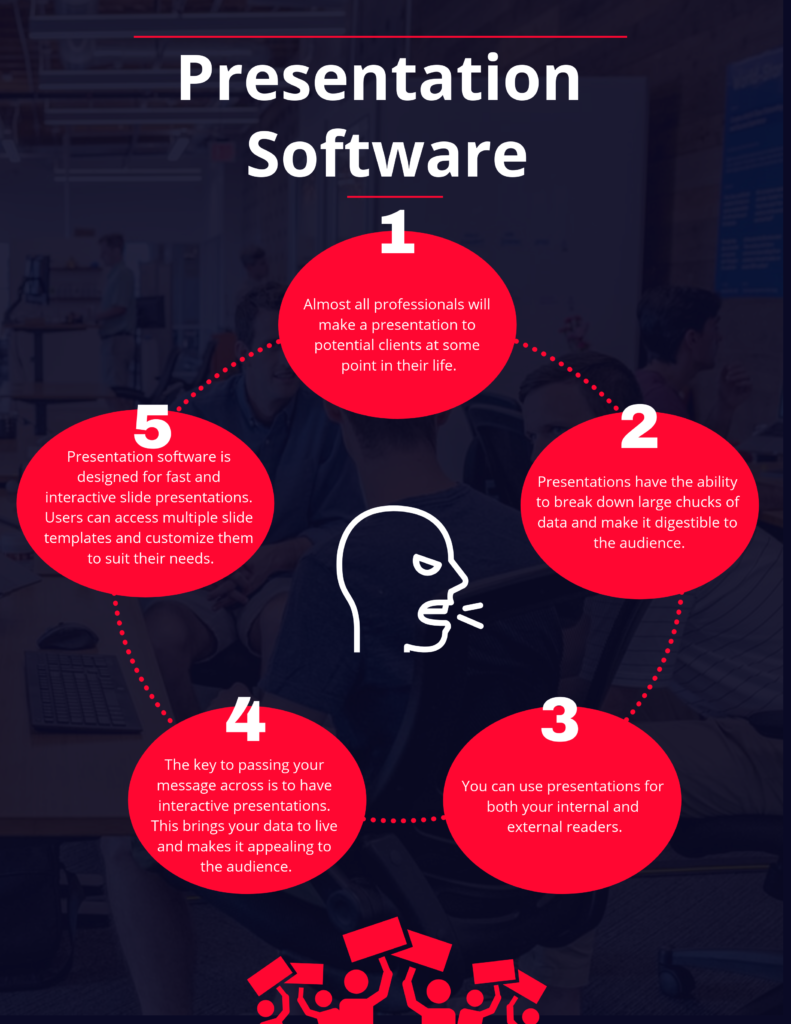Cao News Hub
Your daily source for trending news and informative articles.
Slide into Success with the Right Presentation Software
Unleash your potential! Discover the best presentation software to captivate your audience and elevate your success today!
Top 5 Presentation Software Options to Elevate Your Next Pitch
When it comes to delivering a compelling pitch, the choice of presentation software can make all the difference. Here are the Top 5 Presentation Software Options that can help you elevate your next pitch:
- Microsoft PowerPoint: A classic choice, PowerPoint offers robust tools for creating professional presentations, including templates and animations. Its wide acceptance in the corporate world makes it a go-to for many.
- Google Slides: Ideal for collaboration, Google Slides allows multiple users to work on a presentation simultaneously in the cloud. Plus, it integrates seamlessly with other Google Workspace tools. Learn more about it here.
- Prezi: Offering a unique, non-linear presentation style, Prezi can captivate your audience by moving through the presentation in a more dynamic way. Check out its features here.
- Canva: Known for its design capabilities, Canva provides aesthetically pleasing templates and an easy-to-use interface, making it perfect for marketers and creatives. Explore its presentation options here.
- Keynote: Apple's presentation software combines powerful tools with a sleek user interface, ideal for Mac users. It shines in creating visually striking presentations. Find out more here.

How to Choose the Right Presentation Software for Your Needs
Choosing the right presentation software can significantly impact the effectiveness of your presentations. Begin by identifying your specific needs: Are you creating a presentation for a business meeting, an academic lecture, or a marketing pitch? Each scenario may require different features. For instance, if you need collaboration tools, look for software that offers cloud-based sharing options, such as Google Slides. On the other hand, if you require advanced multimedia capabilities, consider options like Keynote or Microsoft PowerPoint.
Next, assess the user interface and ease of use. A program that is overly complex can hinder your productivity and creativity. Look for presentation software that includes templates and easy customization features. Resources like PCMag provide reviews that can help you navigate through various options. Finally, consider your budget: Some presentation tools are free, while others require a subscription. Make sure the investment aligns with the value it brings to your work or project.
10 Tips for Creating Stunning Presentations with Software Tools
Creating stunning presentations is an art that combines design skills with effective storytelling. To start, always have a clear objective in mind. This helps you tailor your content to your audience's needs. Utilize software tools like Canva or Microsoft PowerPoint, which offer a variety of templates and design elements. Here are 10 tips that can elevate your presentations:
- Choose a cohesive color scheme.
- Limit text on each slide.
- Use high-quality visuals.
- Incorporate animations thoughtfully.
- Practice a seamless flow between slides.
- Engage with your audience.
- Highlight key points with visual aids.
- Maintain consistent fonts.
- Rehearse your presentation.
- Gather feedback for improvement.
Another essential aspect of creating impactful presentations is the use of storytelling techniques. A well-structured narrative helps to keep your audience engaged and makes your message memorable. Incorporate data visualization tools such as Tableau to transform complex information into clearly understandable formats. Remember, your aim is not just to inform but to inspire action and discussion. For further engagement tips, check out TED Talks which exemplify how effective presentations can make a lasting impact.